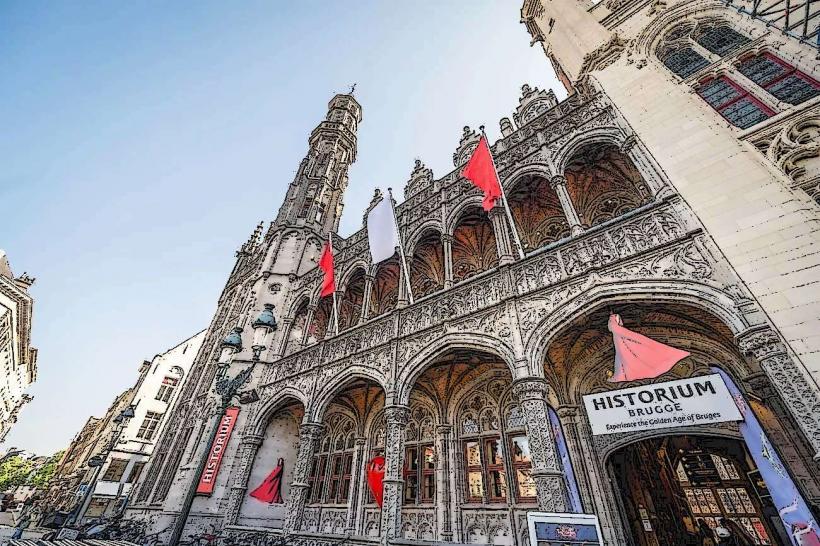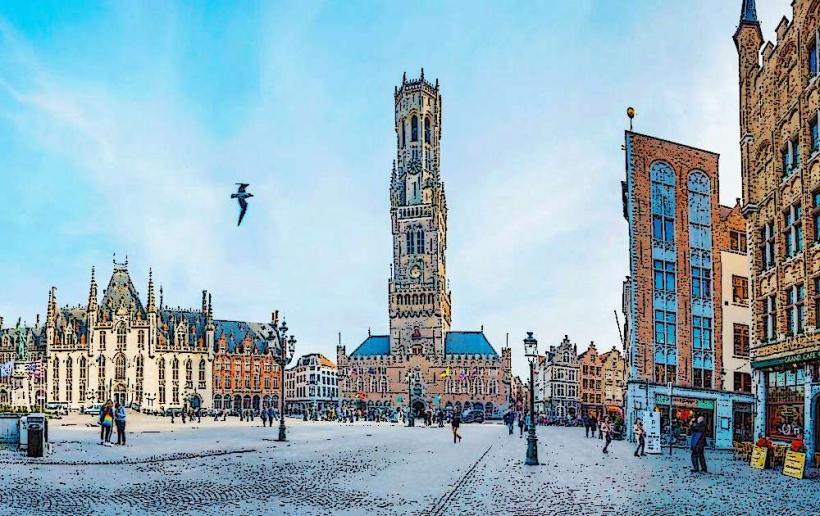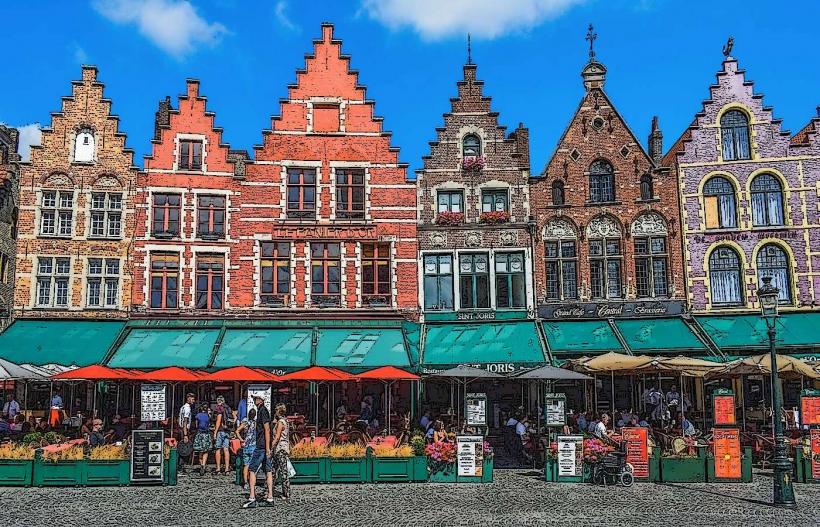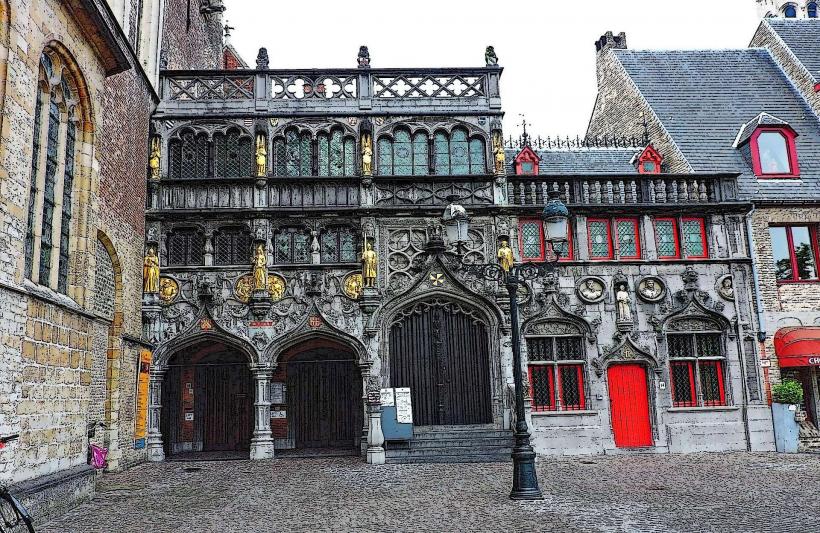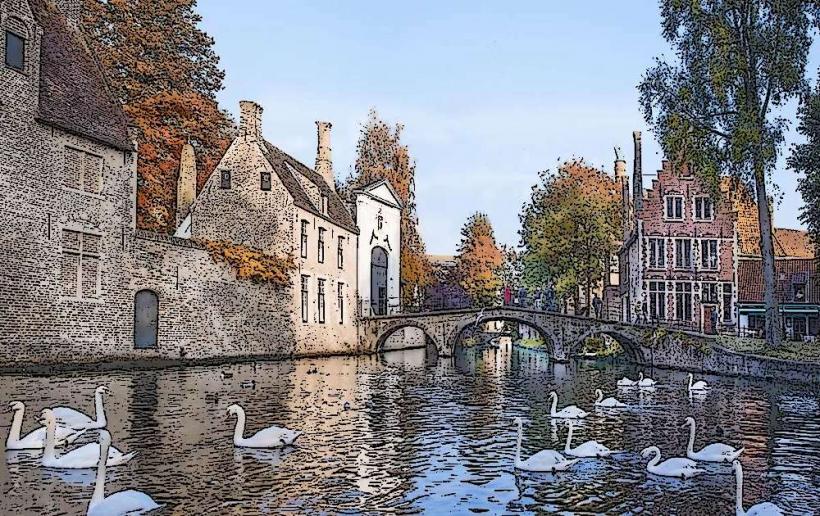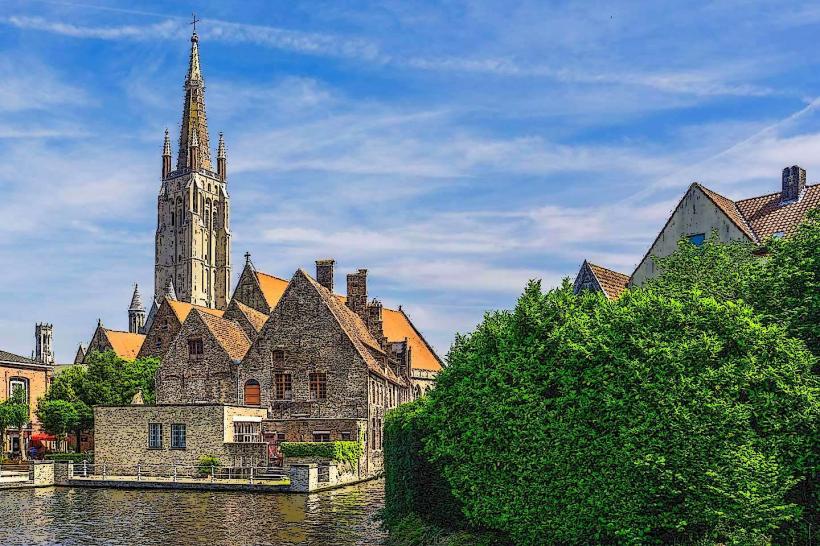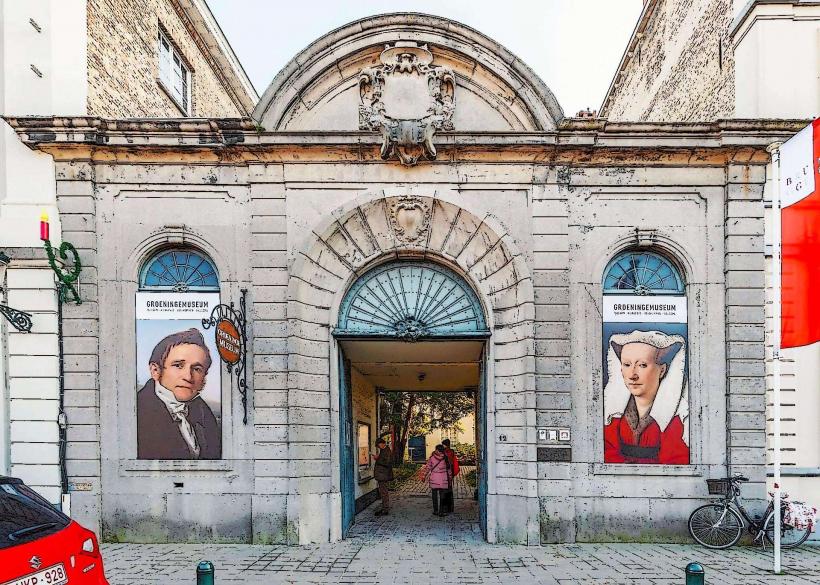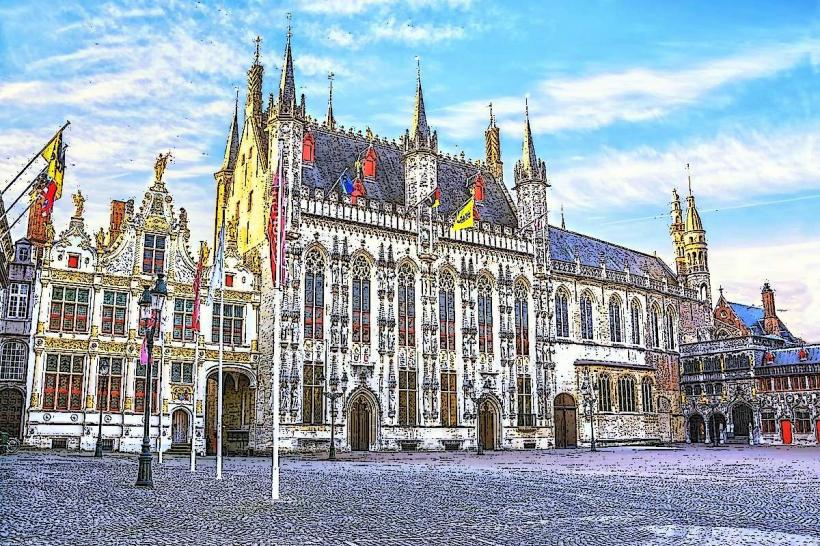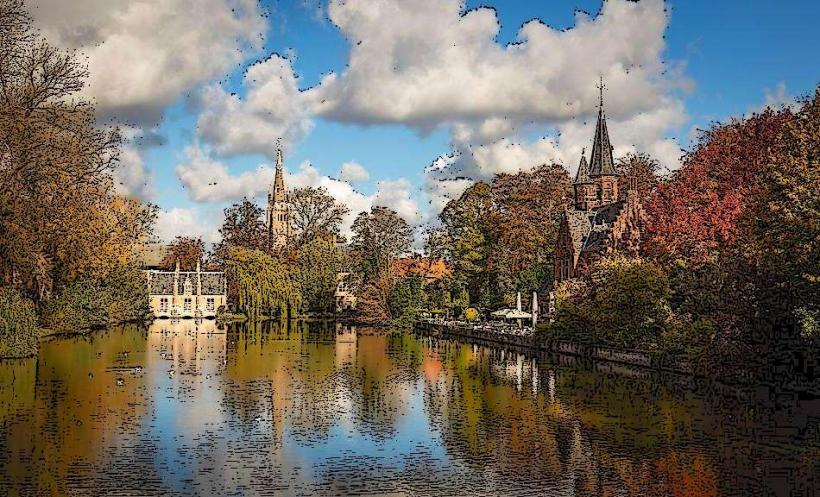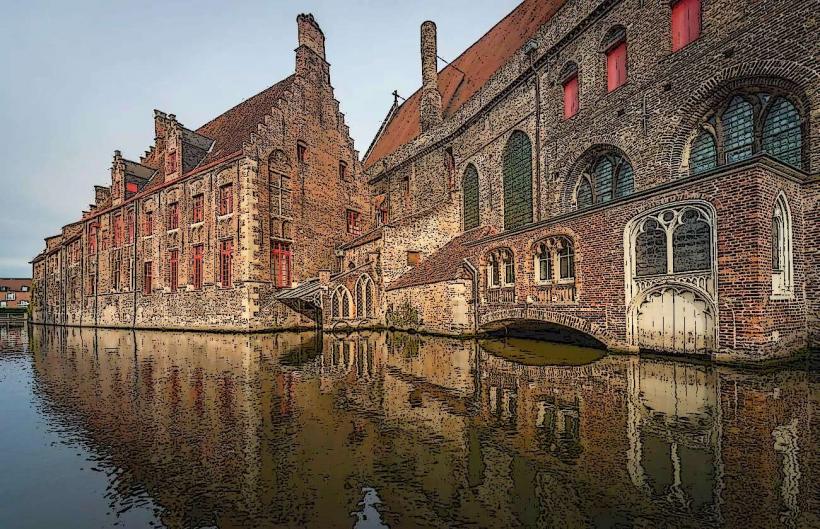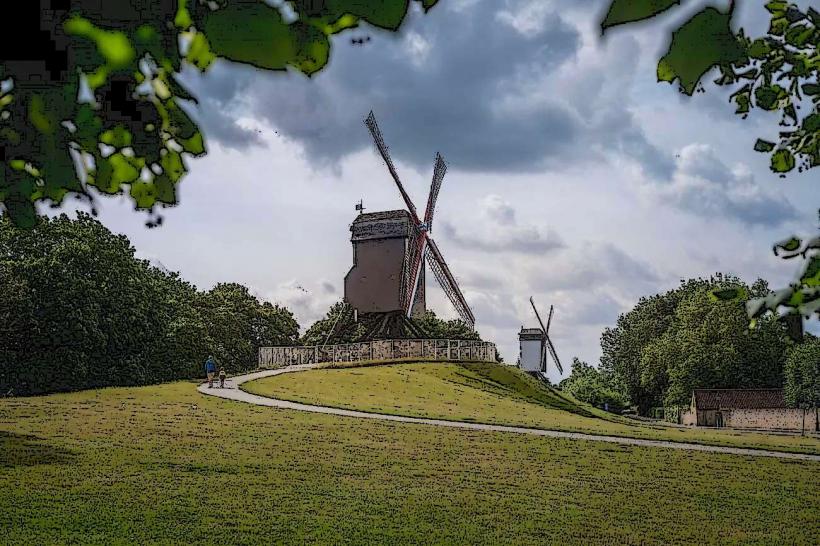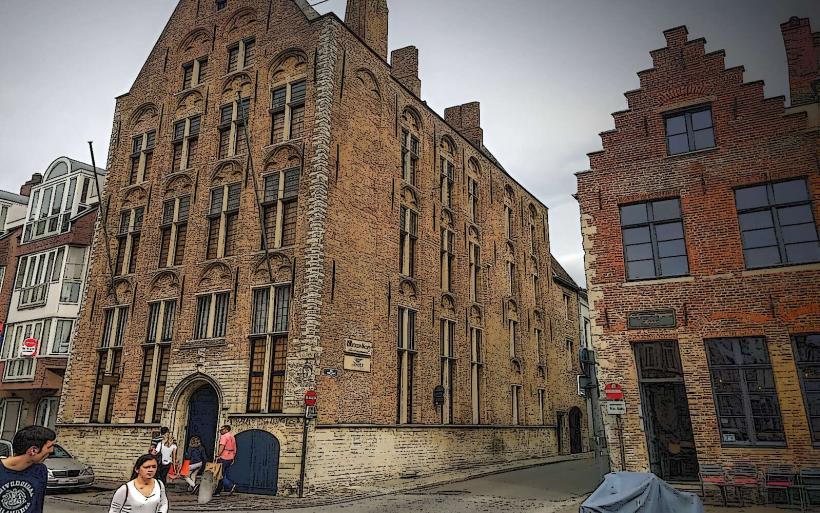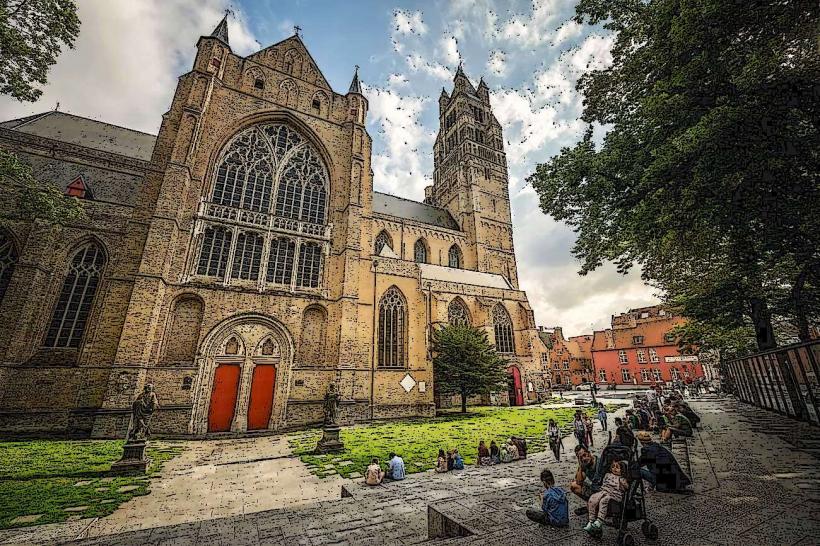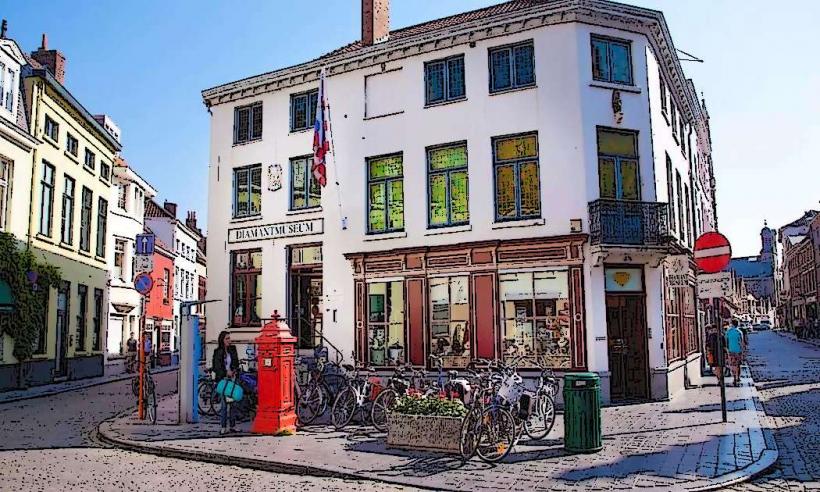Information
Landmark: The Burg SquareCity: Bruges
Country: Belgium
Continent: Europe
The Burg Square (Dutch: Burgplein) is one of the most important and historic squares in Bruges, Belgium. Along with the nearby Markt Square, it forms the heart of Bruges' medieval city center, which is recognized as a UNESCO World Heritage Site. The Burg Square is known for its architectural diversity, showcasing styles ranging from Gothic to Renaissance and Neoclassical, and for being the administrative and religious center of Bruges for centuries.
History
Early Beginnings:
- The Burg Square has been a central hub in Bruges since Roman times, serving as the site of a Roman fortress built around the 2nd century AD to defend against invaders.
- In the 9th century, it became the location of the residence of the Count of Flanders, who governed the region.
Medieval Importance:
- By the Middle Ages, the Burg evolved into Bruges' political and religious center. It housed the city's main administrative buildings, including the town hall, and was adjacent to the bustling Markt Square, where commerce flourished.
- The square also became the site of ecclesiastical power, with the construction of churches and religious buildings such as the Basilica of the Holy Blood.
Modern Use:
- Today, the Burg remains an important landmark and tourist attraction, celebrated for its stunning architecture and historical significance.
Key Landmarks on Burg Square
Stadhuis (City Hall):
- Date of Construction: 1376–1421
- Style: Gothic
- Highlights: The City Hall of Bruges is one of the oldest in the Low Countries and a masterpiece of Gothic architecture. Its ornate facade features statues of biblical figures and counts, along with intricate carvings.
- Interior: The Gothic Hall, adorned with beautiful murals and a vaulted ceiling, is a must-see.
- Function: The City Hall has been the seat of Bruges' administration for over 600 years.
Basilica of the Holy Blood:
- Date of Construction: 12th century
- Style: Romanesque (lower chapel) and Gothic (upper chapel)
- Highlights: This church is famous for housing a relic of the Holy Blood, said to contain drops of Christ's blood. The upper chapel is richly decorated and is an active place of worship.
- Events: The relic is paraded through Bruges annually during the Procession of the Holy Blood.
Brugse Vrije (Liberty of Bruges):
- Date of Construction: 1726 (current building)
- Style: Renaissance and Neoclassical
- Highlights: Formerly the court and administrative seat of the Liberty of Bruges (a feudal region around the city), this building now houses the City Archives. The interior features a beautiful Renaissance fireplace created by Lanceloot Blondeel.
Old Civil Registry (Oude Civiele Griffie):
- Date of Construction: 1537
- Style: Renaissance
- Highlights: This building served as Bruges’ civil registry. Its elegant facade is a fine example of Flemish Renaissance architecture. Today, it is part of the Brugse Vrije complex.
Deanery (Proosdij):
- Date of Construction: 1662
- Style: Neoclassical
- Highlights: The Deanery is a stately building that once served as the residence of the dean of Bruges. Its understated yet elegant facade contrasts with the ornate Gothic style of the City Hall.
Architectural Highlights
The Burg Square is unique for its blend of architectural styles, reflecting Bruges' rich history. As you stand in the square, you can observe:
- Gothic spires and ornamentation on the City Hall.
- The Romanesque simplicity of the lower chapel in the Basilica of the Holy Blood.
- The Renaissance elegance of the Old Civil Registry.
- The Neoclassical symmetry of the Deanery and parts of the Brugse Vrije.
Visitor Experience
- Atmosphere: The Burg Square is quieter and more tranquil than the bustling Markt Square, making it a great spot for leisurely exploration and photography.
- Tours: Guided tours often include the Burg as part of a broader introduction to Bruges’ history. Some tours focus specifically on the architecture and historical significance of the square.
- Dining: There are several cafes and restaurants nearby where you can enjoy local specialties while taking in views of the square.
Nearby Attractions
- Markt Square: Located just a short walk away, it is home to the Belfry of Bruges and a lively market atmosphere.
- Canals: The canals of Bruges are close to the Burg Square, offering opportunities for scenic boat rides.
- Groeningemuseum: A museum showcasing Flemish and Belgian art, located within walking distance.
- Church of Our Lady: Known for housing a Michelangelo sculpture, this church is a short distance from the square.
Conclusion
The Burg Square is a treasure trove of Bruges’ history and architecture. Whether you’re admiring the Gothic grandeur of the City Hall, exploring the religious relics of the Basilica of the Holy Blood, or soaking in the tranquil atmosphere, the Burg offers a memorable experience that showcases the heart of Bruges’ medieval legacy. It is a must-visit destination for anyone exploring this enchanting city.

